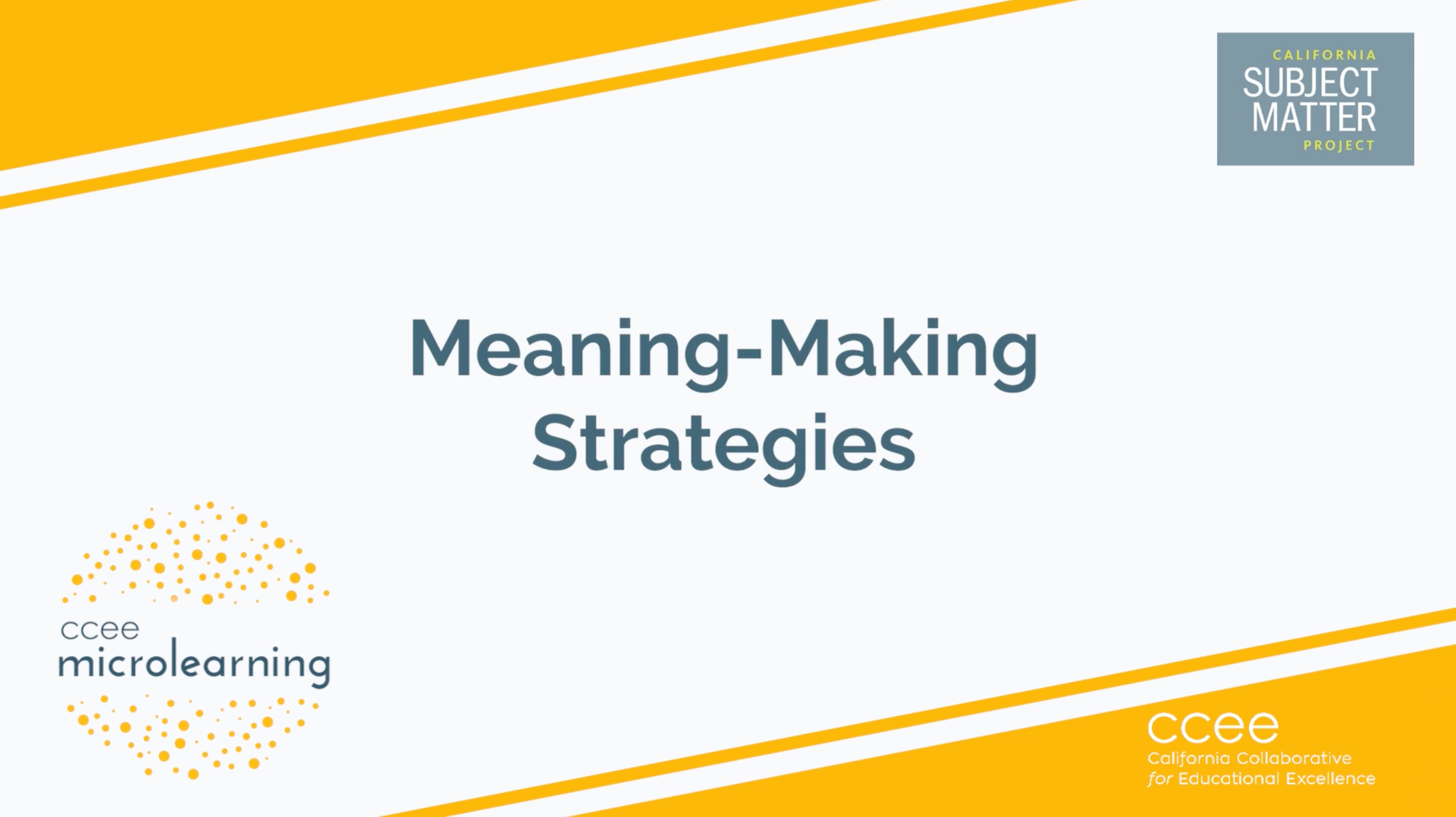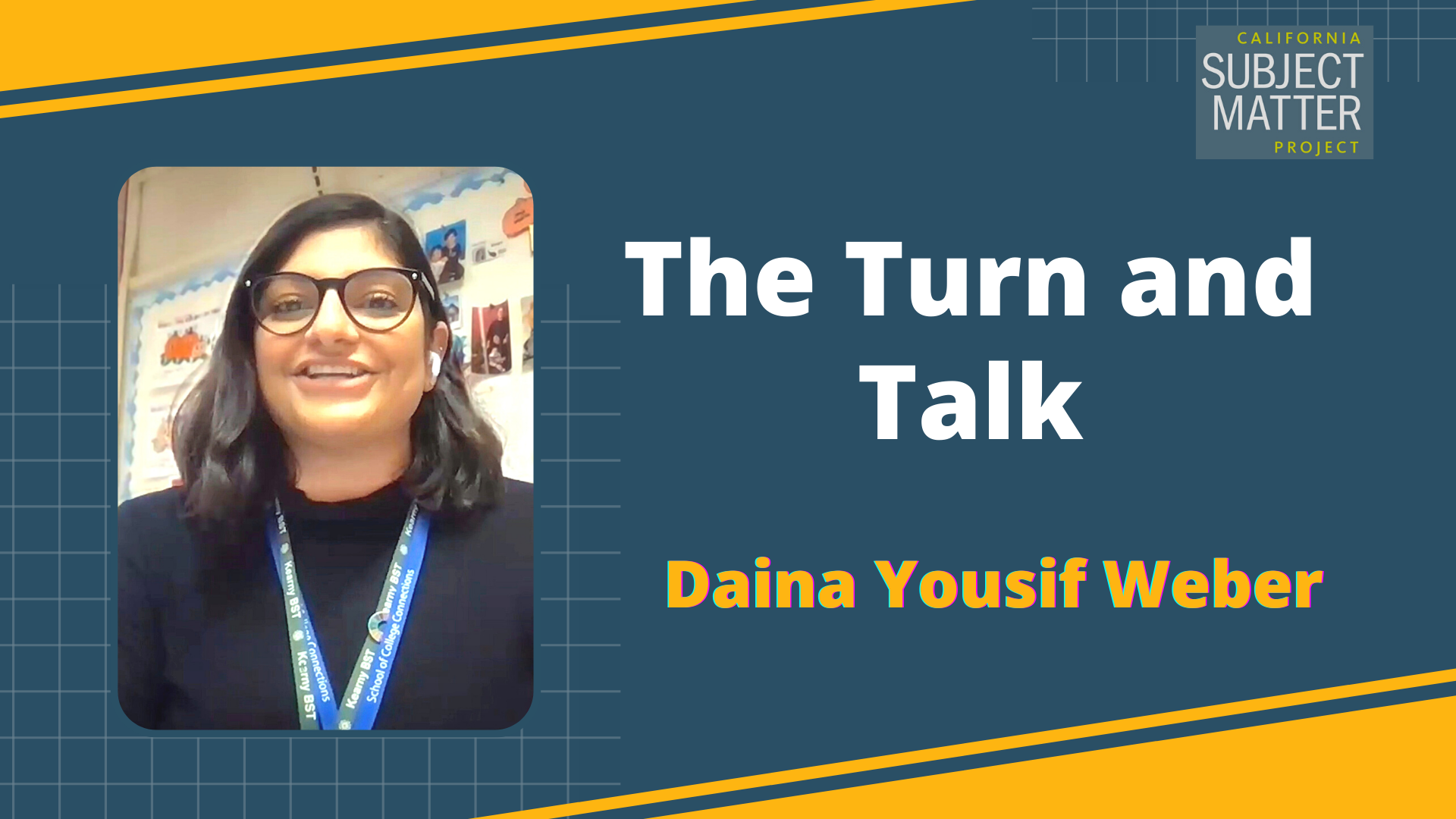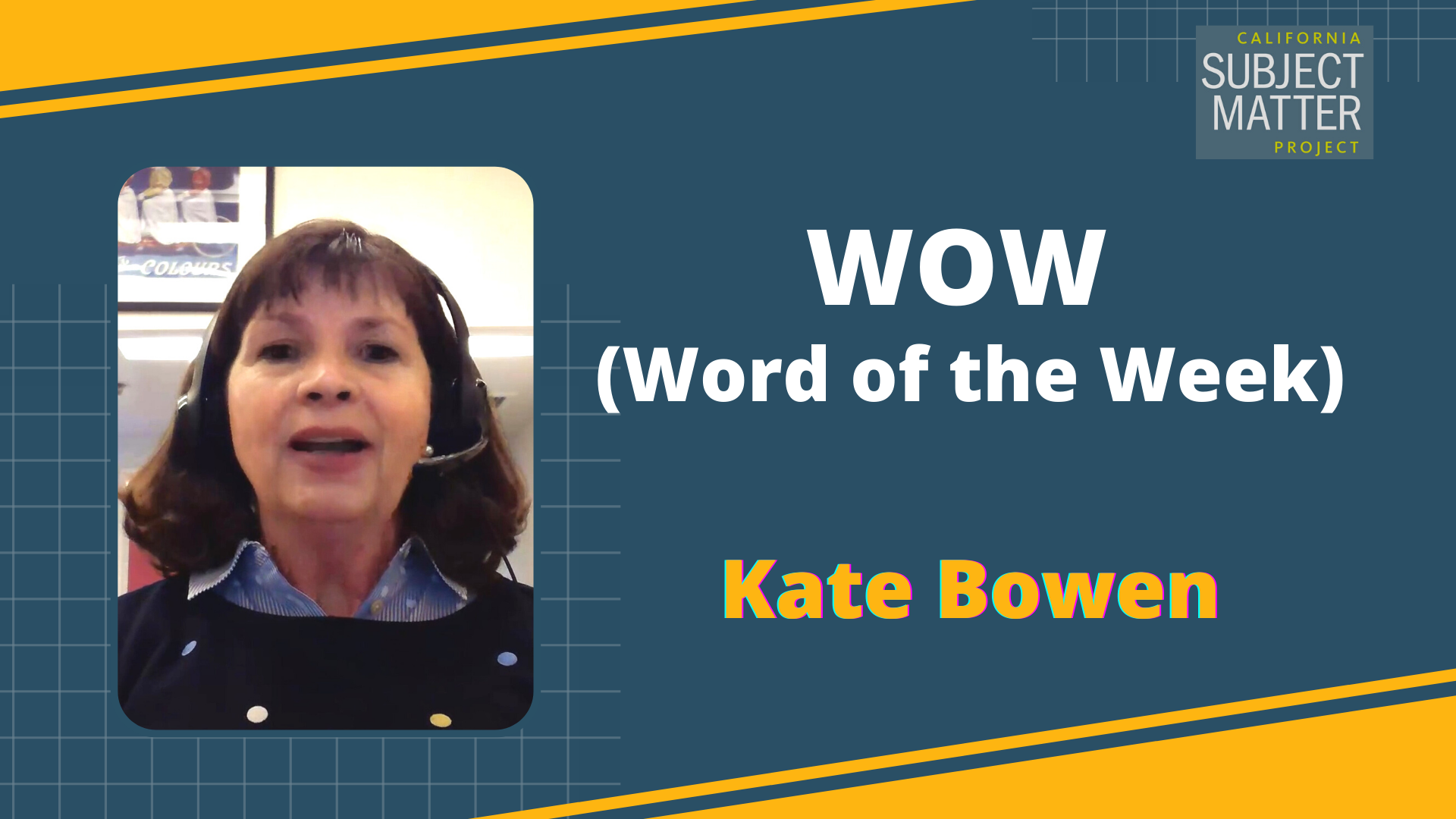Watch the Video
Presenter
Carisa Barnes is a Literacy Instructional Coach at San Diego Unified School District in San Diego, California.
Transcript
Hi there. My name is Carisa Barnes, and I currently serve as a Literacy Instructional Coach in grades six through twelve. I’m so glad that you joined me today for this video, the title which is “Chunking a Text, Supports for Accessing Grade Level Texts”.
This is a wonderful way to help support students with more challenging texts that they’re experiencing in your classes. We know that as we are helping to develop grade level standards in our students, that sometimes they might struggle with more complex texts that we know that they need to read, and so “Chunking a Text” is a strategy that will help to develop those skills in them. It is also a powerful first step in a unit to help students then go on to summarize or analyze what an author may be saying in a text, and so it’s also a really helpful tool in building out a unit to help support students.
This strategy is ideal for teachers in grade six through twelve and, as I mentioned, it’s really perfect for teachers in classes like history or in science, where they are reading more complex texts such as primary source documents. It could be, for example, the Declaration of Independence in history or in science class it could be a more complex scientific article that you really need students to read but we know that they may be struggling with some of the vocabulary or some of the sentence structure or the way that the writer is presenting the information. In English class, I like to use it with poetry sometimes. For example, Shakespeare, in helping to break the text down into smaller portions. It’s also really helpful when you think about, like, if we’re reading a short story for example, or a portion of a novel in helping to guide students into thinking about a particular piece of the text more closely that might be connected to character development or theme. And so those are just some ideas to be thinking about as you are considering the template that has been presented.
As we go into thinking about how to actually build out and use this strategy, you have a template that’s provided for you. So I want to offer you a couple of considerations as you think about it.
For starters, we want to think about providing a purpose for reading. That’s really important as we are helping students to become more independent readers: “Why am I reading this?”, “What’s the purpose in this?” , and so establishing that purpose for reading, calling it out to them, having it even on the document is really important.
The other thing that I wanna remind you about is that it’s so critical that students are reading a text multiple times. And so you might have a purpose for read number one and then a purpose for read number two, and you have that modeled for you in one of the examples. So setting a purpose for reading is really important.
The other thing to think about as you’re going through this is “How you’re gonna chunk that text out?”, “How are you gonna break that particular reading that you want students to do into smaller portions?”, and there is no right or wrong in this. In fact, sometimes it’s better to err on the side of a smaller chunk because it might be a portion of the text that you want students to really get to know deeply, and work with deeply.
As you’re chunking the text, then you want to be thinking about what kinds of questions are you asking students to consider. And, so, in those questions, again you’ll see modeled in the template, very general questions that could be used for any text. It could be “Who or what is this section about?” It could be: “How do the ideas presented in this portion of the text connect to what we read in the last portion?” There might be vocabulary that you know that students might struggle with it, and so that’s another question to ask. You might say: what does the phrase “I have a dream”, and the repetition of that, how does that impact what we’re reading? Or what does the word “endure” seem to mean in this section? So you can really kind of go in any direction with those questions, but again, especially for that first read, we’re just helping students — our goal is to help students really more deeply understand what they’re reading in order to then go on and summarize or analyze at a later time.
A couple of more things to think about: you want to consider sentence length. So, we know that documents that students are reading sometimes have a lot of phrases or clauses in them, and so what you might consider doing is breaking up a longer sentence into some smaller chunks. That’s a great way to help students be able to deconstruct or break apart a more complex sentence to understand the parts that come together to make the whole. So keep in mind you might to have one little phrase that’s in a chunk and then corresponding questions to go with that.
And then as I said, it’s really helpful for students to then go on to that next part of your unit, which might be simply writing a summary, it might be engaging in some talk structures about what they’ve read, or it might be going on to write an analysis. So this chunking of the text and students engaging with that and writing their responses as they go through each chunk of the text is really helpful then in helping to support them in what they might do next.
A couple of just helpful tips to keep in mind as we close. First of all, the texts. Again, breaking up phrases and clauses. Another thing is that you’ve got questions that are provided for you, you can use them as is, or you can revise them to work a little bit more specifically with the text that you’re thinking about. And also just keep in mind that this is a helpful tool, a helpful strategy in our academic language learners, which really is all of our students as they’re learning the grade level text, but it’s especially helpful as we think about the supports for our multilingual learners, for the students who are learning English as a second language.
And, so, to wrap up, I just want to say I love this strategy. It’s a powerful tool in helping students to engage with a text more deeply. It helps to build skills in the kind of readers we want them to be. It gives them the opportunity then to be able to transfer those skills, to take them into other classes and into the general reading that they’re doing in their lives.
Thank you so much for joining me today for “Chunking a Text”.
Accompanying Materials & Resources
- Quick Guide: Chunking a Text (PDF – 1 Page)
- Chunking a Text with Carisa Barnes, Template (PDF)
- Chunking a Text with Carisa Barnes, One-Pager (PDF)
- Chunking a Text with Carisa Barnes, Student example #1 (PDF)
- Chunking a Text with Carisa Barnes, Student example #2 (PDF)
- Chunking a Text with Carisa Barnes, Chunked Text Example (PDF)



